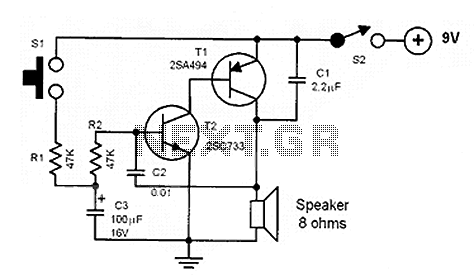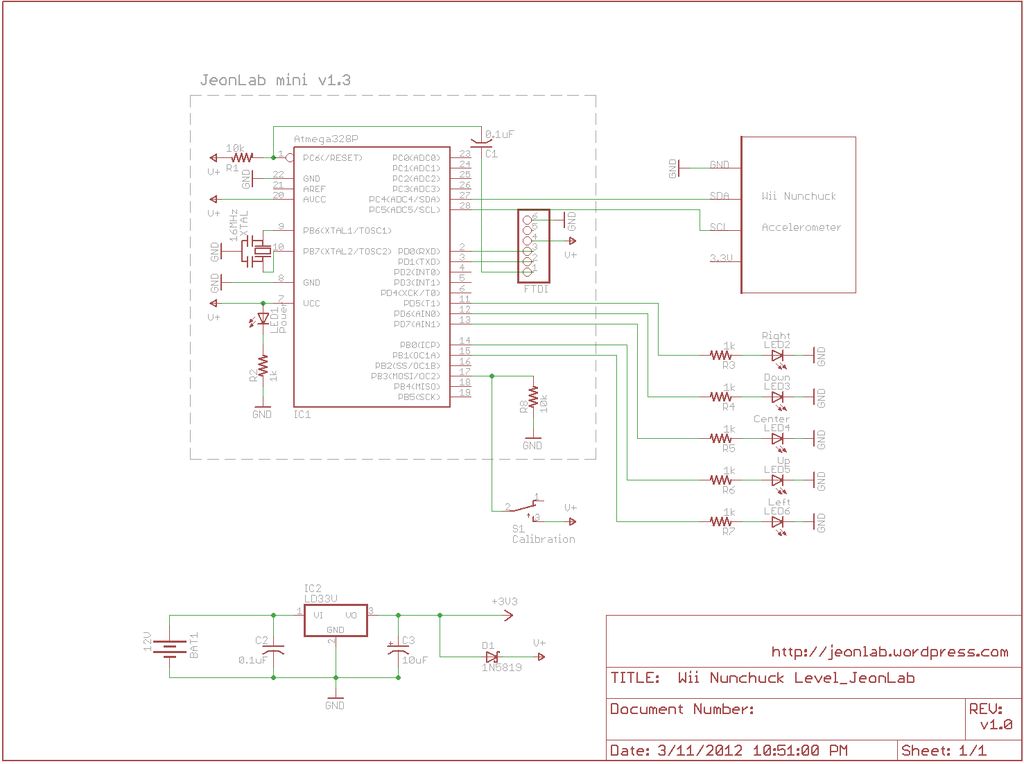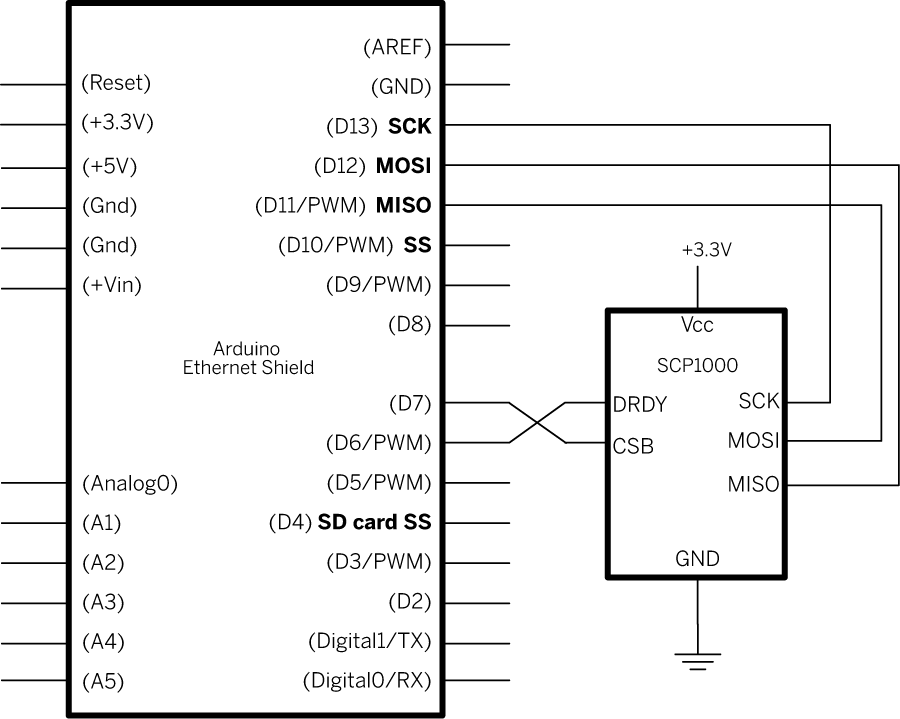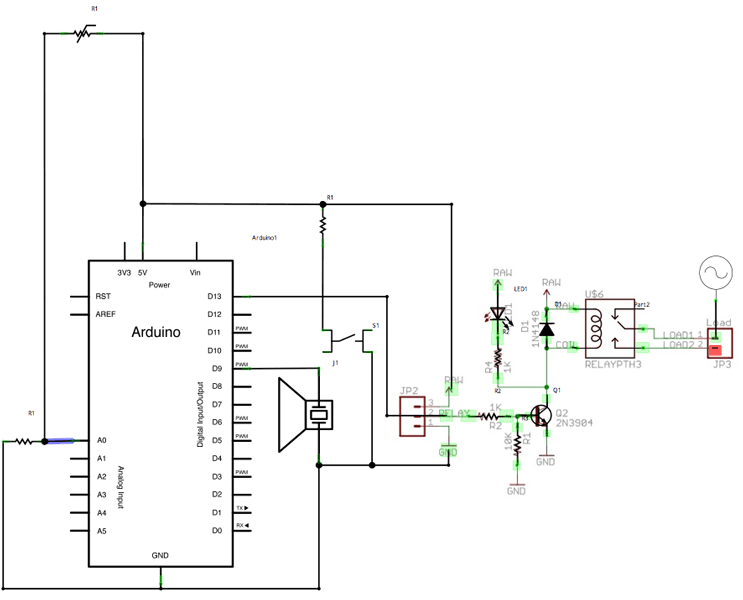
Arduino Tone 3
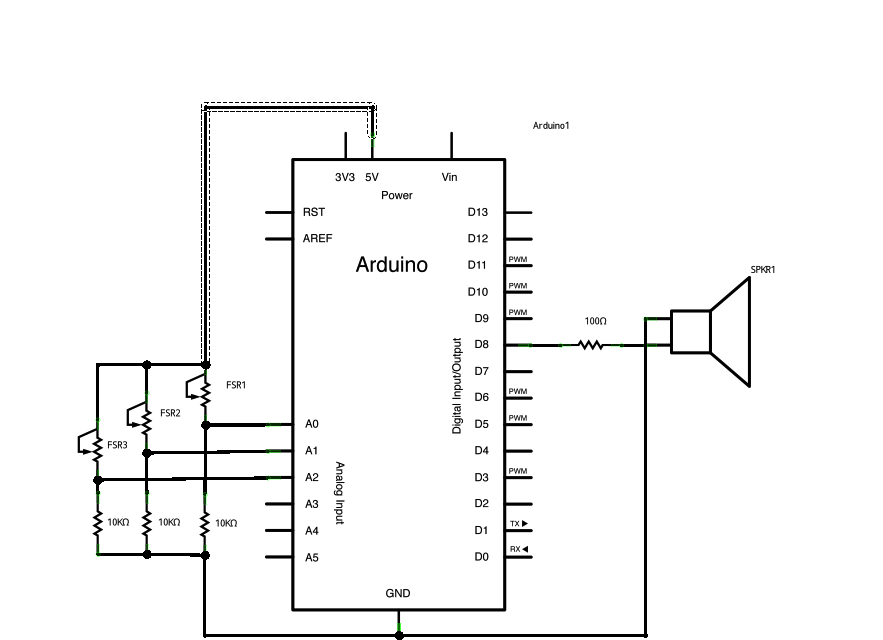
Power three force-sensitive resistors (FSRs) or any other analog sensor with 5V in parallel. Connect each sensor to analog pins 0-2, utilizing a 10K resistor as a reference to ground on each input line. The provided sketch reads three analog sensors, with each sensor corresponding to a note value in an array of notes. If any of the sensors exceeds a specified threshold, the corresponding note is played.
The circuit design encompasses the use of three force-sensitive resistors (FSRs) connected in parallel to a 5V power supply. Each FSR serves as an analog sensor, allowing for the detection of varying pressure levels that can be translated into musical notes.
To implement this circuit, each FSR is connected to one of the analog input pins on a microcontroller, specifically pins A0, A1, and A2. The configuration ensures that the sensors can be read simultaneously, providing real-time feedback on the pressure applied to each FSR. A 10K ohm resistor is connected from each analog pin to ground, establishing a voltage divider configuration that allows for accurate readings of the analog voltage corresponding to the resistance of the FSR. This setup is crucial for ensuring that the microcontroller can interpret the varying resistance of the sensors as voltage levels.
The microcontroller is programmed to read the analog values from the three sensors. The readings are then compared against predetermined threshold values. If the voltage from any sensor exceeds its respective threshold, the microcontroller triggers the playback of a specific note from an array of notes. This array can be predefined in the code, allowing for flexibility in the musical output based on the pressure detected by the FSRs.
This configuration is particularly useful in interactive applications where physical input can influence sound generation, making it suitable for musical instruments, educational tools, or interactive installations. The careful selection of resistor values, sensor types, and microcontroller programming ensures reliable performance and responsiveness in detecting user input.Power your three FSRs (or any other analog sensor) with 5V in parallel. Connect each sensor to analog pins 0-2, using a 10K resistor as a reference to groud on each input line. The sketch below reads three analog sensors. Each corresponds to a note value in an array of notes. IF any of the sensors is above a given threshold, the corresponding note is played. 🔗 External reference
The circuit design encompasses the use of three force-sensitive resistors (FSRs) connected in parallel to a 5V power supply. Each FSR serves as an analog sensor, allowing for the detection of varying pressure levels that can be translated into musical notes.
To implement this circuit, each FSR is connected to one of the analog input pins on a microcontroller, specifically pins A0, A1, and A2. The configuration ensures that the sensors can be read simultaneously, providing real-time feedback on the pressure applied to each FSR. A 10K ohm resistor is connected from each analog pin to ground, establishing a voltage divider configuration that allows for accurate readings of the analog voltage corresponding to the resistance of the FSR. This setup is crucial for ensuring that the microcontroller can interpret the varying resistance of the sensors as voltage levels.
The microcontroller is programmed to read the analog values from the three sensors. The readings are then compared against predetermined threshold values. If the voltage from any sensor exceeds its respective threshold, the microcontroller triggers the playback of a specific note from an array of notes. This array can be predefined in the code, allowing for flexibility in the musical output based on the pressure detected by the FSRs.
This configuration is particularly useful in interactive applications where physical input can influence sound generation, making it suitable for musical instruments, educational tools, or interactive installations. The careful selection of resistor values, sensor types, and microcontroller programming ensures reliable performance and responsiveness in detecting user input.Power your three FSRs (or any other analog sensor) with 5V in parallel. Connect each sensor to analog pins 0-2, using a 10K resistor as a reference to groud on each input line. The sketch below reads three analog sensors. Each corresponds to a note value in an array of notes. IF any of the sensors is above a given threshold, the corresponding note is played. 🔗 External reference

